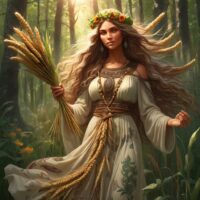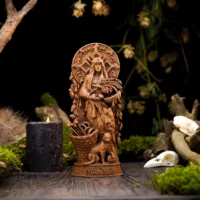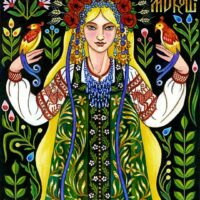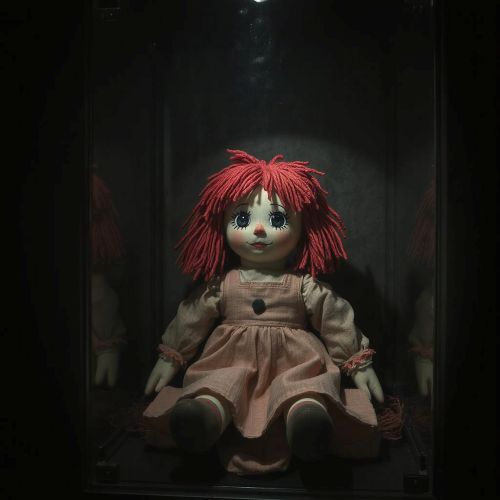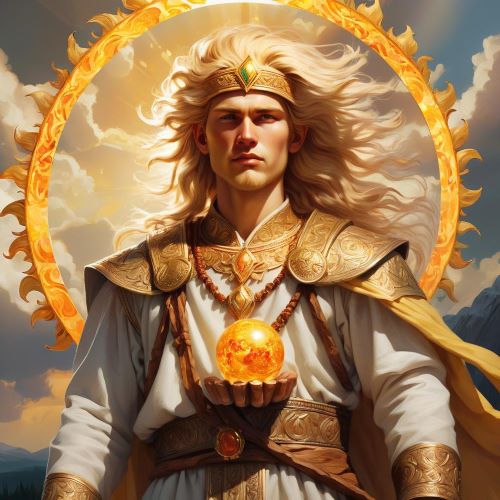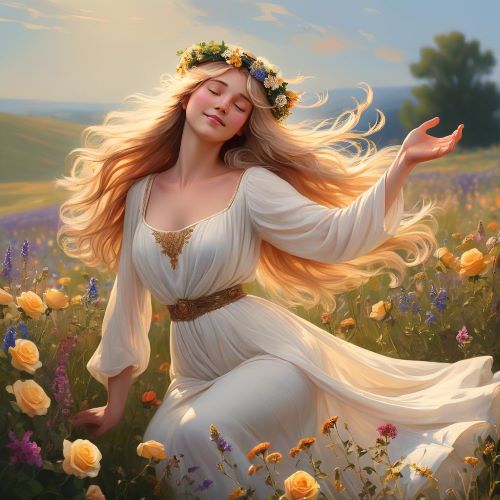Mokosh : The Earth Goddess
Listen
At a glance
| Description | |
|---|---|
| Origin | Slavic Mythology |
| Classification | Gods |
| Family Members | Perun (Husband), Jarilo and Morana (Children) |
| Region | Russia, Ukraine, Poland, Belarus, and the Czech Republic |
| Associated With | Fertility, Earth, Women |
Mokosh
Introduction
Mokosh, also known as Mokoš, is a central figure in Slavic mythology, revered as the goddess of fertility, moisture, and the earth. She is often portrayed as a nurturing mother, symbolizing life and the natural world. Her influence permeates various aspects of daily life, especially concerning women’s roles and destinies. Mokosh is associated with domestic activities like spinning and weaving, highlighting her connection to traditional feminine responsibilities. Her worship has roots in ancient history, linking her to agricultural cycles and underscoring her role as a provider and protector of the earth’s bounty.
This multifaceted deity embodies the nurturing aspects of femininity and motherhood while also serving as a guardian of household tasks and grain production. Though the specifics of her origins remain obscured by time, Mokosh’s impact on Slavic culture and traditions is profound and enduring, cementing her status as one of the most significant deities in the mythology.
Physical Traits
Mokosh is often portrayed as a tall and majestic woman, exuding a strong yet nurturing aura. Her attire typically consists of a flowing gown adorned with symbols of fertility, such as sheaves of grain and flowers, signifying her deep ties to nature. Many depictions feature her with long, cascading hair, further highlighting her femininity and earthly essence. In various representations, Mokosh is shown holding a spindle or a sheaf of wheat, underscoring her role in weaving the fabric of life and supporting agricultural practices. This imagery reinforces her vital connection to the cycles of life, death, and rebirth.
While descriptions of her physical appearance can differ across Slavic regions and eras, some recurring themes stand out. Mokosh is generally depicted as a matronly figure with flowing hair, sometimes embellished with flowers or ribbons. She is frequently associated with water, often depicted near rivers, lakes, or wells. Many artworks show her holding a spindle or distaff, symbolizing her influence in the domestic realm. In some images, Mokosh is represented with uplifted hands and accompanied by plow horses, highlighting her agricultural significance. Though rare, certain depictions emphasize her connection to male potency and fertility, adding to the complexity of her character.
Family
Other names
Mokosh is recognized by various names throughout different Slavic cultures, highlighting her widespread veneration. In certain regions, she is affectionately called “Mokoshka,” a diminutive form that conveys both reverence and familiarity. In East Slavic traditions, she is often linked to the concept of “Mother Earth,” emphasizing her nurturing role and deep connection to nature and fertility. Her name varies across local traditions, with alternatives like “Mokosha,” “Mokoshenka,” and “Mokoshitsa” reflecting her adaptation to different customs and beliefs. These naming variations illustrate how Mokosh was revered in diverse cultural contexts while maintaining her core attributes.
Etymologically, her name is thought to derive from the Slavic words “mokry,” meaning “wet,” and “moknut,” meaning “to dive deeply,” further reinforcing her association with moisture and fertility. In regions that underwent Christianization, Mokosh’s worship was sometimes replaced by the veneration of the Virgin Mary or St. Paraskeva, demonstrating the blending of pagan and Christian traditions. Ultimately, Mokosh stands as a central figure in the rich tapestry of Slavic mythology, evolving over time while preserving her essential significance.
Powers and Abilities
Mokosh wields a diverse array of powers that highlight her significance in both domestic life and the natural world. She is primarily known for her influence over fertility, encompassing not just the fertility of women but also that of the earth. This connection links her to human life and agricultural prosperity. Her abilities allow her to impact various natural elements, affecting crop growth, livestock health, and the overall well-being of her devotees. Additionally, Mokosh is regarded as a guardian during childbirth, reflecting her nurturing nature and dedication to protecting children.
In some traditions, she is linked to weaving and craftsmanship, underscoring her role in the arts and domestic skills. This association illustrates the vital contributions of women’s work in maintaining households and communities, further enhancing Mokosh’s reputation as a protective goddess. Moreover, as the goddess of fate, she is thought to spin the thread of life, influencing the duration and quality of each person’s existence. Her responsibilities extend beyond fate and fertility, encompassing the safeguarding of women and children and ensuring household well-being.
Modern Day Influence
In contemporary culture, Mokosh’s presence is evident in various artistic expressions, literature, and modern pagan practices. She has emerged as a symbol of female empowerment, resonating with movements advocating for women’s rights and equality, reflecting a renewed appreciation for femininity. Her character inspires a wide range of artistic interpretations, from paintings and sculptures to literary works that delve into her mythology and qualities. In many modern pagan traditions, she is honored in rituals that celebrate the earth, fertility, and the natural cycles of life, marking a resurgence of interest in ancient practices and the divine feminine.
Mokosh’s themes of fertility and domesticity continue to resonate with individuals, highlighting the crucial roles women play in family and society. By weaving ancient symbols and narratives into contemporary life, Mokosh serves as a bridge between historical cultural stories and current values and beliefs.
Overall, Mokosh stands as a powerful symbol within Slavic mythology, embodying the deep connection between women, the earth, and life’s cycles. Her attributes not only underscore her importance in ancient cultures but also reflect the evolving perspectives on femininity in today’s world. As a central figure in Slavic mythology, Mokosh showcases the richness of this tradition and its ongoing relevance, ensuring her legacy endures into the present day.
Related Images
Frequently Asked Questions
What is lorem Ipsum?
I am text block. Click edit button to change this text. Lorem ipsum dolor sit amet, consectetur adipiscing elit. Ut elit tellus, luctus nec ullamcorper mattis, pulvinar dapibus leo.
What is lorem Ipsum?
I am text block. Click edit button to change this text. Lorem ipsum dolor sit amet, consectetur adipiscing elit. Ut elit tellus, luctus nec ullamcorper mattis, pulvinar dapibus leo.
What is lorem Ipsum?
I am text block. Click edit button to change this text. Lorem ipsum dolor sit amet, consectetur adipiscing elit. Ut elit tellus, luctus nec ullamcorper mattis, pulvinar dapibus leo.
What is lorem Ipsum?
I am text block. Click edit button to change this text. Lorem ipsum dolor sit amet, consectetur adipiscing elit. Ut elit tellus, luctus nec ullamcorper mattis, pulvinar dapibus leo.
What is lorem Ipsum?
I am text block. Click edit button to change this text. Lorem ipsum dolor sit amet, consectetur adipiscing elit. Ut elit tellus, luctus nec ullamcorper mattis, pulvinar dapibus leo.

